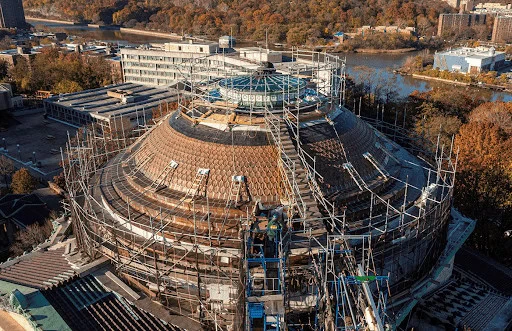Historic buildings are tangible links to our past, telling stories of architectural brilliance, cultural shifts, and societal progress. But time spares no structure, and many of these architectural gems fall into disrepair. This is why we are so dedicated to historical architectural restoration, to breathe new life into these structures.
Preserving historic buildings serves multiple important purposes:

Restorers must understand the properties of original building materials and how they interact with modern alternatives. This knowledge is crucial for selecting compatible materials that will preserve the building's integrity while improving its durability.
Engineers assess the building's structural stability and design solutions to reinforce weakened elements. This might involve innovative techniques to strengthen foundations or repair load-bearing walls without compromising the building's historical character.
Specialists in the field study the chemical and physical processes of material degradation. They develop and apply treatments to clean, stabilize, and protect historic materials from further decay.
Modern restoration projects often incorporate sustainable practices, such as improving energy efficiency without altering the building's appearance. This requires a deep understanding of building physics and environmental impact.
While science provides the foundation, restoration is also an art form that requires creativity, skill, and a deep appreciation for historical aesthetics.
Before any physical work begins, thorough research is conducted to understand the building's history, original design, and subsequent alterations. This might involve:
Restoration projects bring together a diverse team of experts, each contributing specialized knowledge:
Their expertise ensures that every aspect of the building is properly assessed, treated, and restored.
The challenge lies in integrating these modern elements seamlessly into the historic fabric of the building.
Finding materials that match the original can be difficult, especially when dealing with centuries-old buildings. Restorers must often get creative, sourcing salvaged materials or working with specialists to recreate historic materials.
Historic buildings are often subject to strict preservation guidelines. Navigating these regulations while also meeting modern building codes can be complex and requires careful planning.
Restoration work frequently uncovers hidden features or unforeseen structural issues. This requires flexibility and problem-solving skills to adapt the restoration plan as needed.
As technology advances, new tools and techniques are emerging to aid in the restoration process:
We prioritize traditional tools and methods, doing things by hand. Many techniques remain unchanged from 100 years ago.
We selectively use technology where it complements craftsmanship, not as a means to cut corners. We are open to appropriate technological integration, but do not rely on it to replace skills.
Our focus is on genuine restoration through historical tools and methods, aiming for the highest quality and most accurate outcome, with a strong emphasis on craftsmanship.
Breathing new life into historic buildings is a complex but rewarding mission that requires a delicate balance of science, art, and respect for the past. By preserving these architectural treasures, we can maintain our connection to history and create sustainable, vibrant spaces for future generations to enjoy. Contact Heather and Little to learn more about our architectural restoration services for your building.
If you are looking for a second opinion on your project or have a particularly complex issue that needs a fresh eye, such as historic building restoration, we’re here to help. Tackling tricky restoration projects is our specialty, and we welcome the opportunity to provide consulting services. We apply a keen attention to detail to all our commissions.
Join our mailing list and keep up to date on what’s going on with Heather & Little, sheet metal and roofing, including access to industry insights, interesting project case studies and incentives.